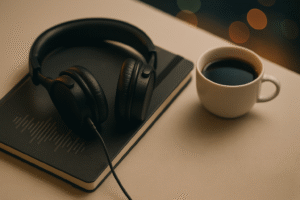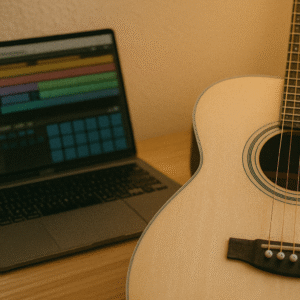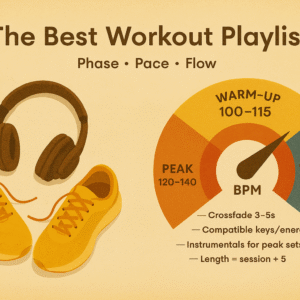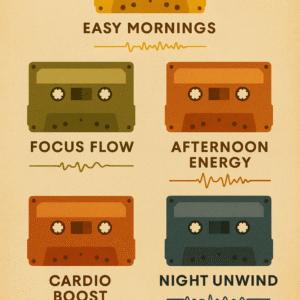Lo-fi beats have become the background track of studying and deep work. What makes them effective—and how do you build a playlist that actually helps?
The focus formula (kept simple)
-
Predictable rhythm: Fewer dramatic changes means fewer attention spikes.
-
Moderate tempo: ~60–90 BPM tends to feel steady, not sleepy.
-
Minimal vocals: Words tug your language centers; instrumentals free them up.
Building your playlist
-
Start neutral (10–15 mins): Mid-tempo tracks with soft drums ease you in.
-
Deep work (30–50 mins): Slightly slower, consistent loops; avoid abrupt drops.
-
Micro-break (3–5 mins): One ambient track—stand, stretch, hydrate.
-
Return flow (20–30 mins): Back to mid-tempo to finish strong.
Practical tips
-
Length: Aim for 60–90 minutes to match a focus block.
-
Volume: Low enough to be background; if you notice it, lower it.
-
Noise pairing: A subtle rain track beneath lo-fi can increase masking for noisy rooms.
-
Device hygiene: Turn off notifications; your playlist can’t compete with pings.
Bottom line: The best lo-fi playlist feels almost invisible—supportive, consistent, and easy on the brain.



